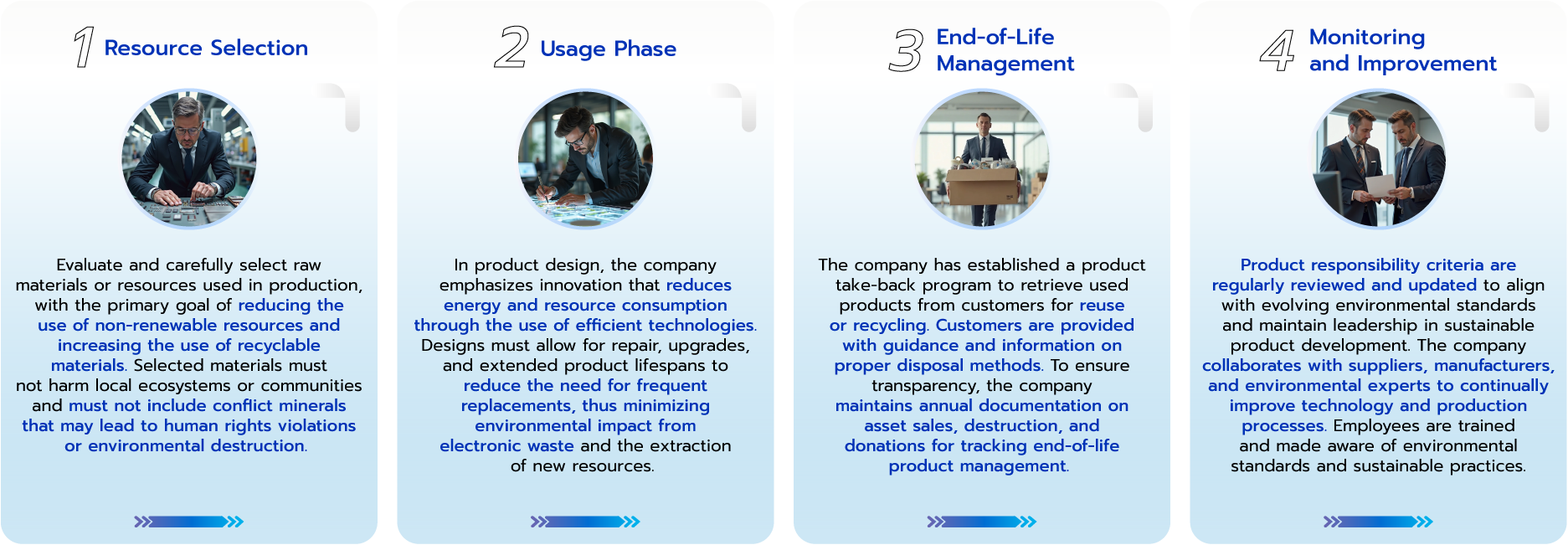The company is committed to reducing negative environmental impacts while seeking opportunities to expand investment in environmentally friendly businesses throughout the entire value chain. To this end, we support the United Nations Sustainable Development Goals (UN SDGs) by promoting the development and dissemination of environmentally friendly technologies, organizing activities that enhance environmental responsibility, and supporting related operational approaches through the development of environmental policies that emphasize the efficient and optimal use of energy. Additionally, we manage risks and opportunities arising from climate change to help our customers and business partners operate sustainably and without disruption.
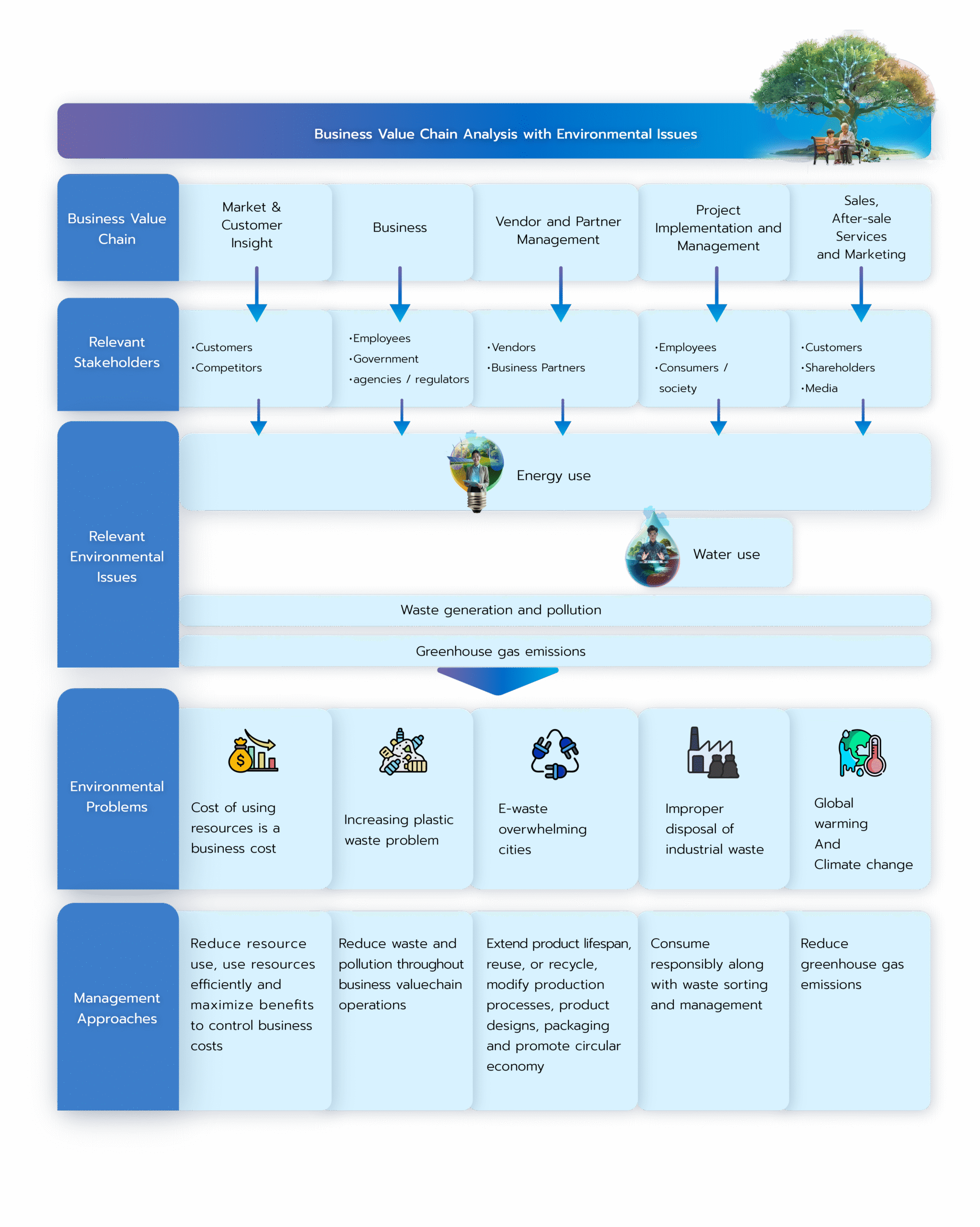
Climate Change Risk
Climate change risks, including those arising from natural disasters, can impact the company’s operations and potentially disrupt activities across the value chain. These risks may also affect asset valuation, business value, and employee safety. Therefore, the company places great importance on climate change management and recognizes the significance of both risks and opportunities related to climate change by regularly assessing its impact on business operations and performance.
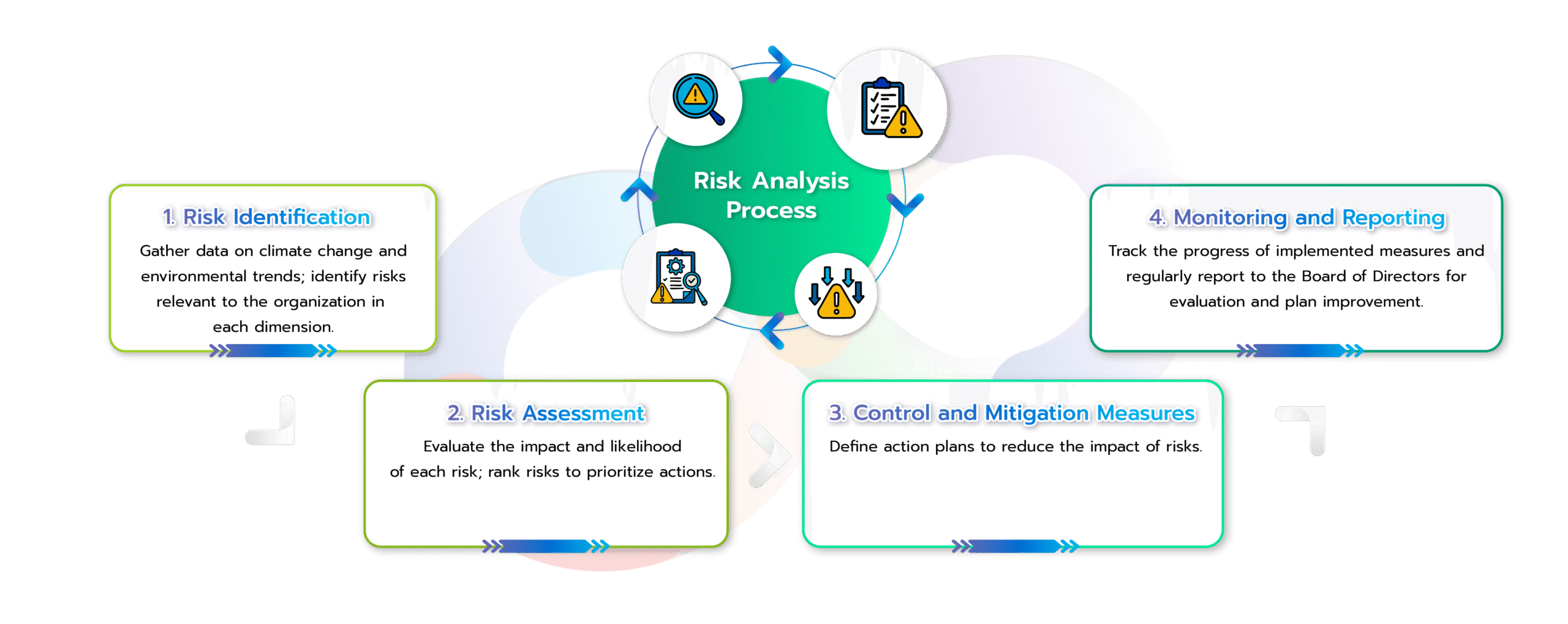
Climate Change Governance
The company has established a governance and management structure for climate change that spans from the Board of Directors down to the operational level, ensuring that climate-related management aligns seamlessly with the company’s vision and mission.
Roles of the Risk, Corporate Governance, and Sustainability Management Committee
- Define sustainability policies and directions, approve climate management policies and frameworks to ensure alignment with international standards, and establish clear strategic goals.
- Oversee climate-related risks by reviewing and evaluating risks that may impact the organization—such as regulatory risks or physical risks—while ensuring transparent control processes and setting Key Risk Indicators (KRIs).
- Promote stakeholder engagement by overseeing transparent communication with both internal and external stakeholders and supporting their involvement in developing relevant policies and initiatives.
- Monitor performance and report progress by reviewing climate management results through sustainability reports or corporate governance reports and ensuring that plans are updated as needed to reduce risks and capture business opportunities.
Roles of Senior Management in Climate Change Governance
- Strategic Planning and Implementation: Develop detailed action plans based on climate targets set by the Board and formulate strategies to manage risks and seize opportunities arising from climate change.
- Resource and Budget Allocation: Support initiatives that mitigate environmental impacts and allocate personnel and training resources to ensure employee understanding of sustainable development practices.
- Risk and Opportunity Management: Monitor potential climate-related risks in operational processes and implement measures to mitigate such risks.
- Monitoring and Process Improvement: Regularly evaluate outcomes using Key Performance Indicators (KPIs), and revise plans based on assessment results and stakeholder feedback.
- Communication and Sustainable Culture Building: Foster a sustainability mindset across the organization through clear communication and encourage employee participation in reducing climate-related impacts.
Climate Action

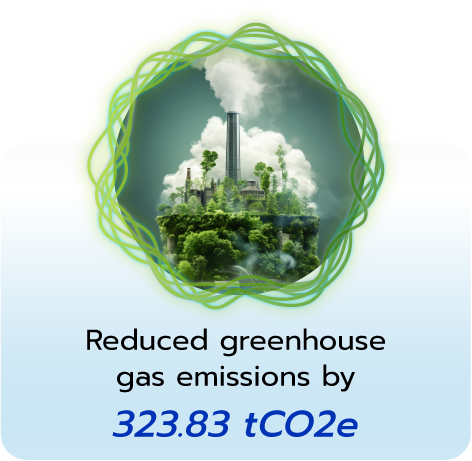
Energy Management
In today’s era, electricity consumption is not only a major operational and production cost but also has significant environmental and social impacts, such as greenhouse gas emissions that contribute to climate change and the degradation of natural resources. Therefore, the company places strong emphasis on sustainable energy management, aiming to reduce electricity usage and minimize environmental impacts through a comprehensive energy management plan.
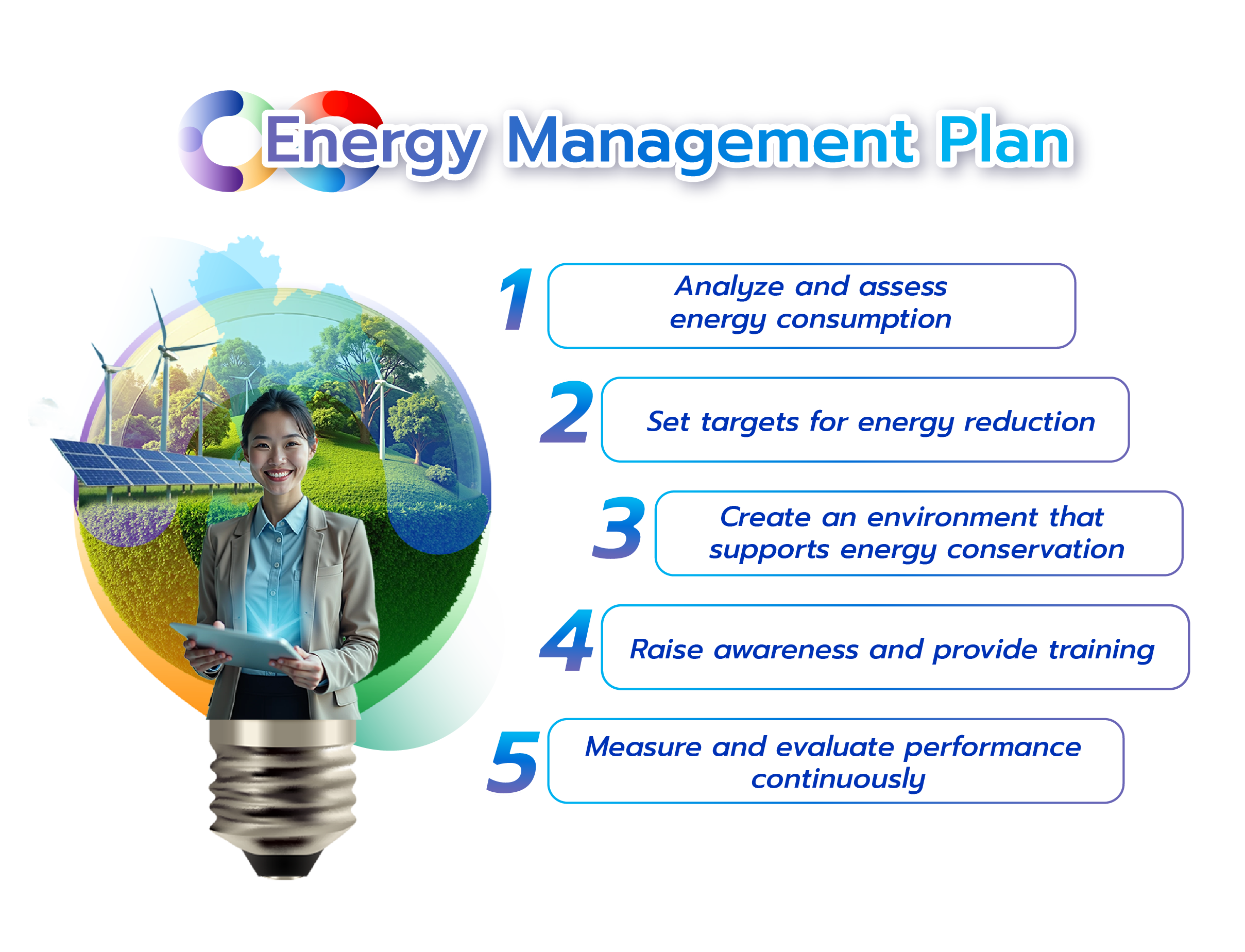
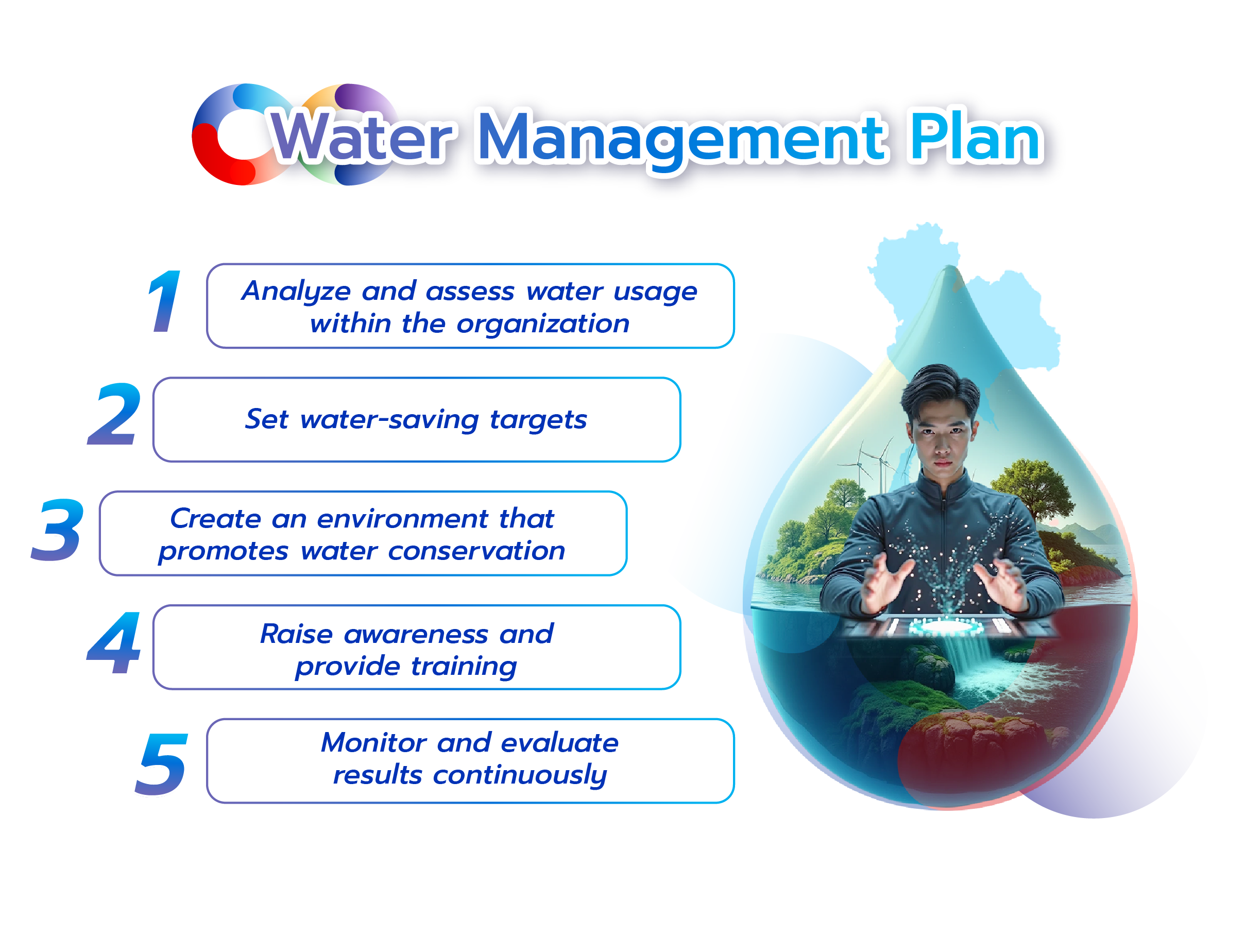
Water Management
Although the company’s core operations do not involve water use, employees still consume water for daily necessities. Recognizing that water scarcity has become a global crisis impacting the environment, communities, and the economy, the company is committed to supporting the United Nations Sustainable Development Goals, particularly those related to efficient water management.
Waste and Waste Management
The company is committed to maintaining environmental balance while fostering growth through the development of products that meet consumer needs. It has established criteria in the product development process that not only ensure high quality but also consider environmental impacts at every stage of the product life cycle—from resource selection to end-of-life disposal.
